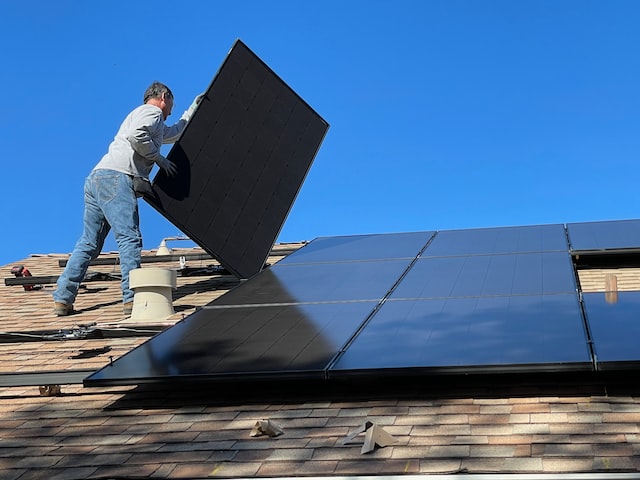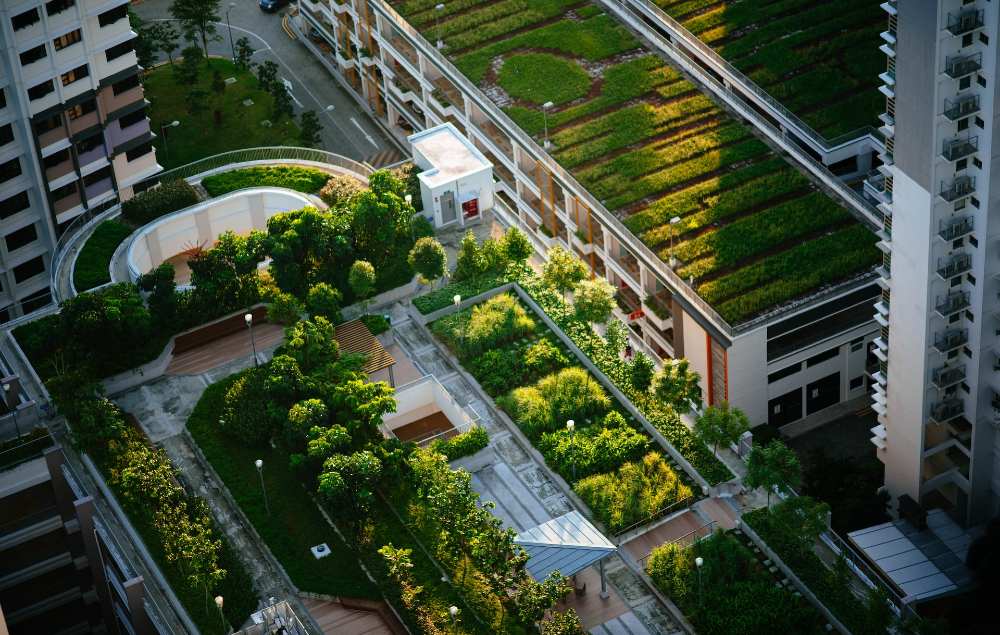Innovation parks are specialised spaces designed to promote innovation, entrepreneurship, education and economic growth, providing a supportive environment for businesses, researchers and professionals.
These parks typically feature state-of-the-art facilities, access to cutting-edge technology and resources, and opportunities for collaboration and networking. However, as the world faces the urgent need to address environmental issues, it is important to ensure innovation parks promote sustainability.
Sustainability can be a crucial driver of innovation and economic growth. Sustainable development is capable of addressing various environmental problems and creating new business opportunities, improving competitiveness and quality of life. Moreover, it is a crucial aspect of the long-term success of innovation parks.
There are many ways to promote sustainability in innovation parks. Examples include renewable energy production, optimal energy efficiency, sustainable transport, green spaces and others. Leveraging even some, if not all, of the above elements, can create a unique, sustainable and attractive community for professionals and companies.

However, despite the growing recognition of the importance of sustainability, many innovation parks still lack the necessary infrastructure and amenities to promote it. Sustainable investments in innovation parks are necessary to make them “greener” and sustainable.
In this article, we will explore the role of innovation parks in promoting sustainability, the challenges they face and the sustainable solutions they can implement. We will also look at cases of successful and sustainable innovation parks and consider their impact on the environment and local communities.
6 Sustainability Challenges Innovation Parks Face
The Environmental Impact
Innovation parks can have a negative environmental impact from the first foundations laid. Because of their size, they are usually built in open green spaces away from the urban centre.
Traditional property development often leads to the destruction of natural habitats, the displacement of biodiversity and the creation of heat islands. Finally, the construction process can generate large volumes of waste and pollution.
Lack of Sustainable Infrastructure
Many innovation parks lack the necessary infrastructure and amenities to promote sustainability. For example, especially when energy costs are exceptionally high, creating an energy-self-sufficient innovation park through renewable sources is particularly important. This will not only eliminate the fixed costs of energy but also reduce the carbon footprint. Furthermore, such a site will become more attractive to visitors and employees.
Financing and implementation
Developing sustainable infrastructure in innovation parks can be a costly and complex undertaking. It requires a significant investment of time, money and resources. In addition, finding the right balance between economic growth, environmental protection, and social responsibility can be challenging.
Resistance to Change

Sustainability often requires changes in how things are done that we are used to. Resistance to change can arise from anyone and refers to reluctance or opposition to accepting and implementing new ideas, methods and technologies.
For example, when designing a sustainable innovation park, some may consider green spaces unnecessary since there is no economic benefit and the maintenance costs are pretty high.
Lack of Knowledge and Understanding
Unfortunately, however, even now there are still many who do not understand the importance of sustainable development and what it means in the design, construction and operation of sustainable infrastructure.
The Role of Innovation Parks in Promoting Sustainability
Production of Renewable Energy
Innovation parks can install photovoltaic systems on their rooftops, integrate wind turbines or use other renewable energy sources to generate electricity. This reduces their carbon footprint and provides a reliable source of clean energy for the businesses and professionals there.

Energy Efficiency
Innovation parks can promote energy efficiency by designing smart buildings with new technologies, using natural light, and ventilation and incorporating other energy-efficient features. This can help reduce energy consumption and costs while improving indoor air quality.
Access to Sustainable Transport Options
Innovation parks can provide access to sustainable transport options, such as bike-sharing schemes, electric vehicle charging stations and dedicated bus routes. This not only reduces emissions and improves air quality but also provides an alternative to traditional cars, improving region’s sustainability.
Green Spaces and Biodiversity

Education and Awareness-raising
In addition to integrating sustainable infrastructure, innovation parks can also promote sustainability through education and awareness-raising programmes. This can include introducing students to the principles of sustainable development but also educating businesses and professionals about sustainable practices and providing resources to implement sustainable solutions.
These figures are only a tiny sample of the overall contribution that innovation parks can make to sustainability. It is essential that in the process of designing an innovation park, the above elements are not treated separately but integrated into the overall design.
Examples of Successful and Sustainable Innovation Parks
The Cleantech Park in Denmark: This innovation park focuses on clean technology and sustainable energy solutions. It has a range of renewable energy systems, such as solar, wind and biogas, as well as energy-efficient buildings and sustainable transport options. The park also includes green spaces such as a nature reserve and a recreational pond. The park has attracted several leading clean technology companies and has become a centre for research and development in sustainable energy.
The Cambridge Science Park in UK :It hosts several leading technology and biotechnology companies and research institutions. The park strongly emphasises sustainability and has implemented several initiatives to reduce its environmental impact. These include the use of renewable energy, energy-efficient buildings and sustainable transport options. The park also includes green spaces and has been recognised for its efforts to conserve biodiversity and wildlife.
The Park 20|20 in the Netherlands: Park 20|20 is a sustainable innovation park focusing on the circular economy, energy transition and smart mobility. The park has implemented a range of sustainable infrastructure and amenities, such as renewable energy generation, energy-efficient buildings and sustainable transport options. In addition, the park strongly emphasises community engagement and education and hosts a series of events and workshops to promote sustainable practices.
JOIST Innovation Park in Greece:

JOIST Innovation Park focuses on fostering innovation and knowledge transfer in the fields of entrepreneurship, technology, science, art and design. It houses organisations and research groups developing sustainable solutions and holds many events and training on sustainability for students, businesses and professionals.
It is an exemplary model of bioclimatic design and reuse of an industrial building. Recycled, environmentally friendly materials were used in its construction to reduce the energy footprint of its construction. It has green spaces, and much of its energy needs are covered by renewable energy sources.
The above examples illustrate how innovation parks can have the potential to promote sustainability by integrating practices such as renewable energy production, energy efficiency, sustainable transport, green spaces and more. In this way, they manage to promote environmental protection and social responsibility.
Wrapping Up
We saw how innovation parks play a vital role in promoting sustainability. They create a supportive environment that encourages sustainable practices. Parks like Cleantech, Cambridge Science Park, Park 20|20, and JOIST are examples of how sustainable development can create unique, attractive, and sustainable communities for businesses, researchers, and professionals.
Promoting sustainability in innovation parks is a moral imperative and a smart economic strategy that supports innovation and economic growth. Therefore, innovation parks must continue to invest in sustainable infrastructure and educate and raise awareness about sustainable development.
Don’t miss the opportunity to be part of the future of sustainable innovation! Visit JOIST Innovation Park to experience the innovative infrastructure and amenities that make it a top destination for professionals, researchers and entrepreneurs.
Join the JOIST community and take your first step towards a sustainable future.

